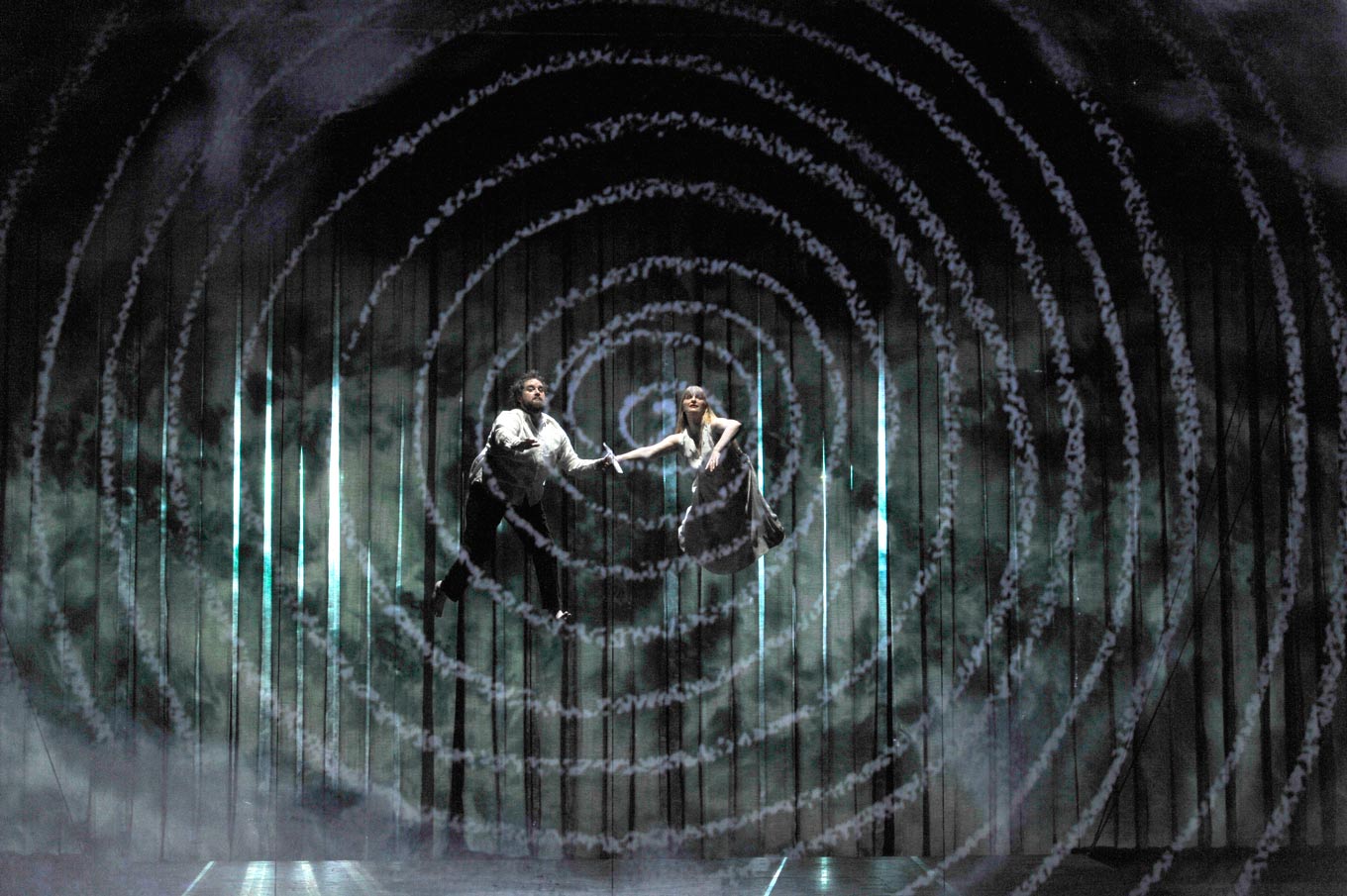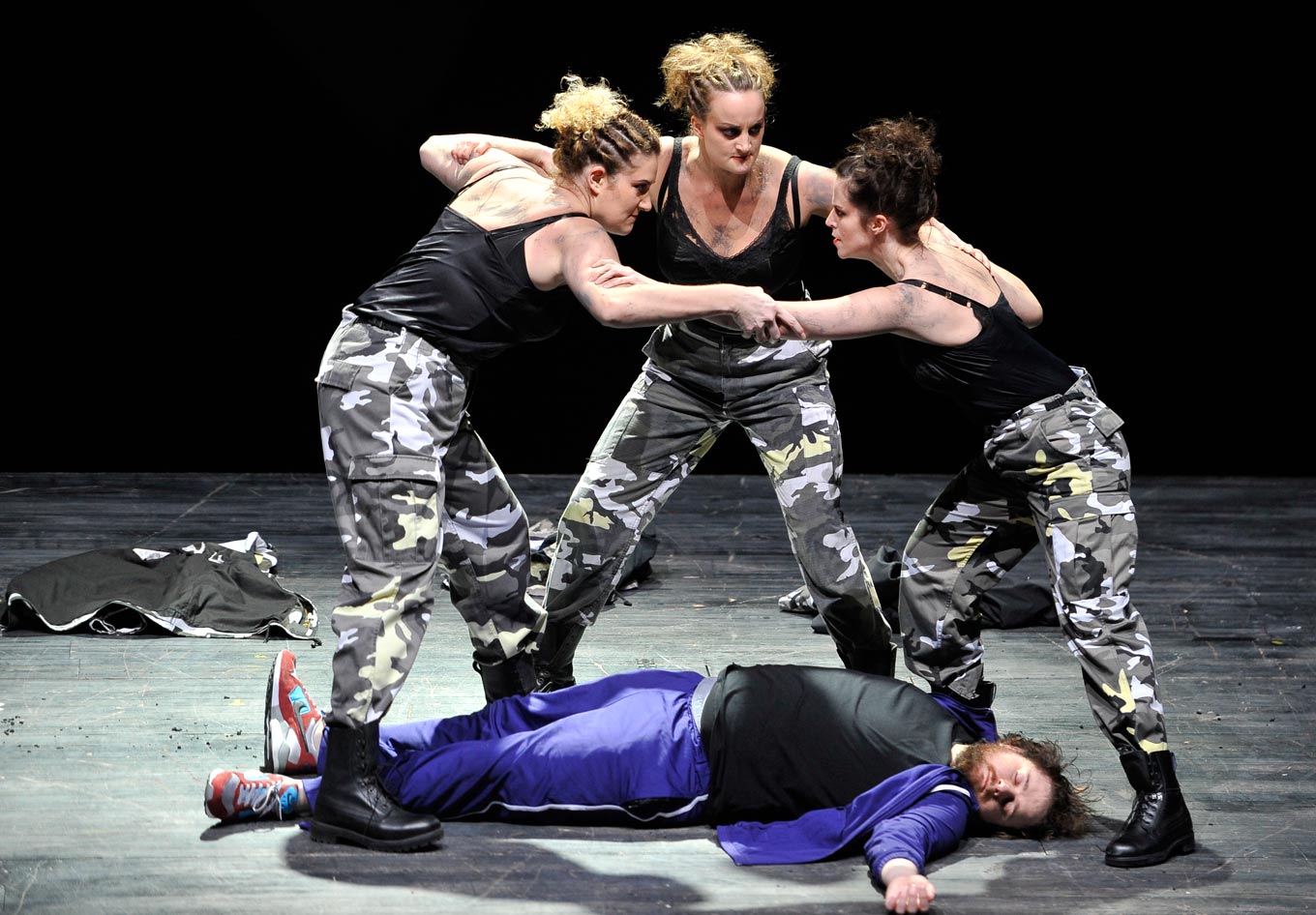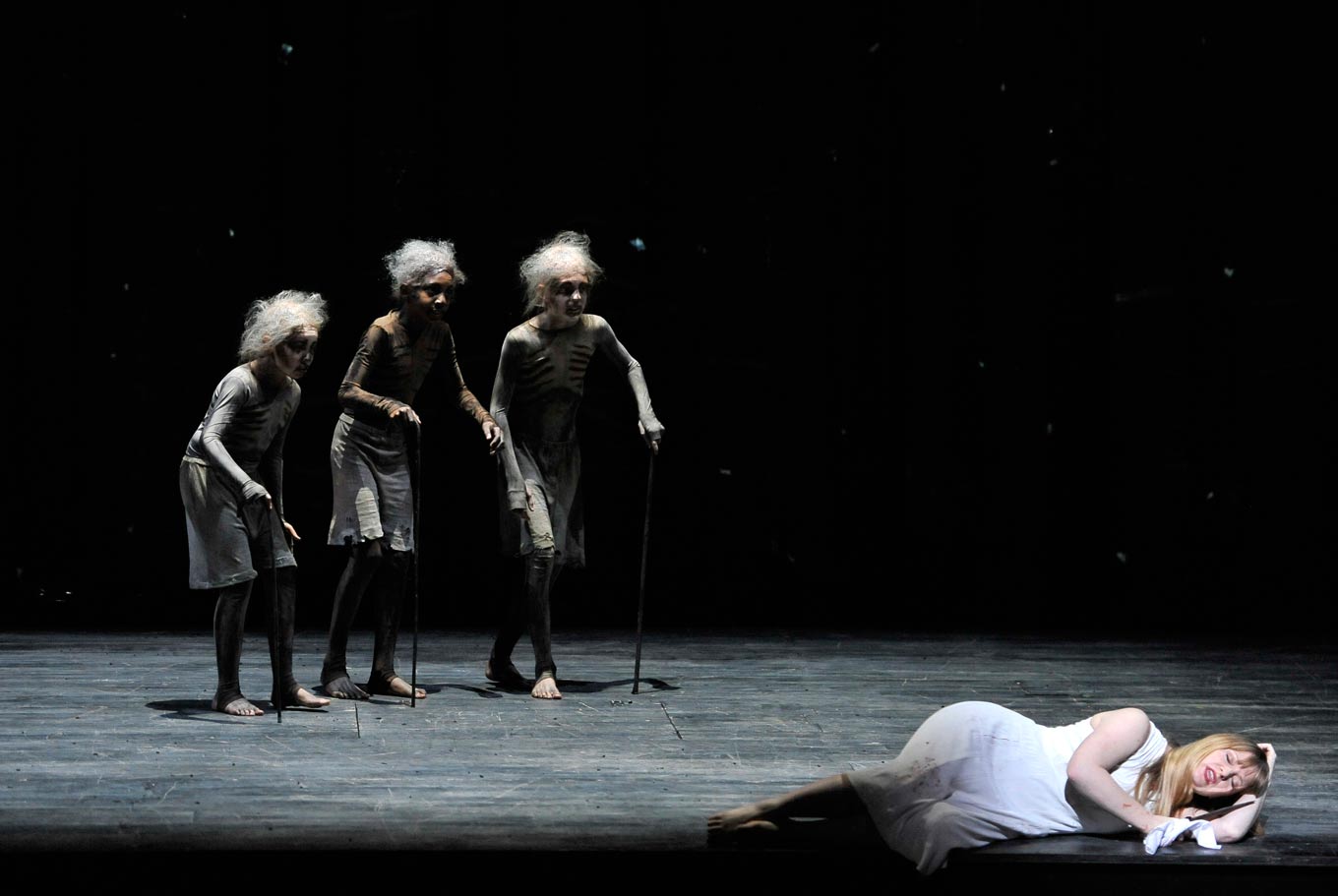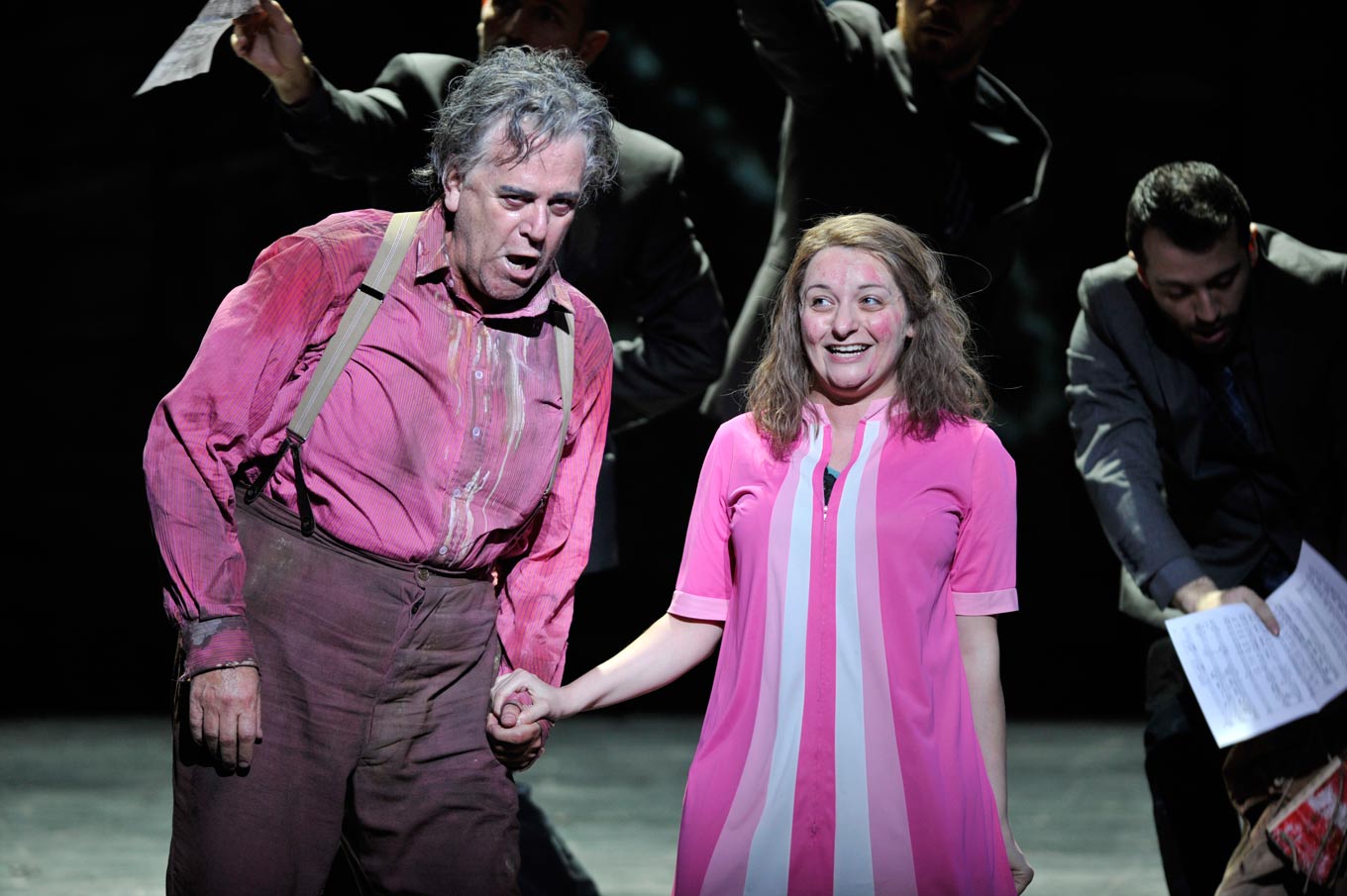
In review: ENO's The Magic Flute
ReviewWe caught Simon McBurney’s production of The Magic Flute at English National Opera, just in the nick of time. It was a beautiful introduction to the London Coliseum, which is lush and cozy all at once, and this Flute was full of life, fun, and and fantastic music.
Conductor Mark Wigglesworth threw us all into Mozart’s score with little warning, and as the lights slowly dimmed over the overture, we were drawn into the quick-paced, imaginary world. Foley artists Robin Beer (video) and Ruth Sullivan (sound) flanked the stage; Beer used illustrations and puppetry to tell the story, make jokes, and expertly negotiate tricky scenes like the giant snake’s pursuit of Tamino. His chalkboard scribblings at the top of the show were a lesson in choreographed calligraphy, his canvas projected live onto the stage. Sullivan brought the show into technicolour with the sounds of birds, thunder, fire, rushing water, and hilarious gags with Papageno.

Of course, the use of foley artists is novel in opera, yet it wasn’t just the novelty that drew us in to McBurney’s world. It was completely delightful to use the “guts” of the theatre to unashamedly tell this story; Flute is a piece that resists against specific places and times, and its impact is weakened when a director attempts to focus on the libretto’s life lessons, at the expense of the silliness. With set designer Michael Levine, McBurney struck a beautiful balance of respect for Mozart, and comfortable inclusivity. The very visible orchestra was constantly part of the action; onstage cameos, by flautist Claire Wicks and the gentleman at the Glockenspiel, felt completely honest, and their scenes were made even more impressive without any instrument-miming or pre-recorded sounds.
The strong cast had a way of making us forget that Mozart’s music is difficult to sing. Tenor Allan Clayton was a perfect Tamino; he found ease in the role, and he had an appealing mix of youth and decisiveness in his sound. He was a totally endearing presence onstage; his scruffy hair and matching beard belied his wide-eyed wonder, and he was always a real person, even in Flute’s otherworldly universe.

Three Ladies Eleanor Dennis, Catherine Young, and Rachael Lloyd showed off a lovely, uniform sound as a trio. It took little time to recognize individual personalities among the Ladies, and despite their questionable alliances, the humour of their scenes in Act I weren’t forgotten. They set up the entrance of a very human Queen of the Night, sung by Canadian soprano Ambur Braid. For honesty’s sake, we’ll admit that her performance was one of the big draws to this production (Braid is a colleague and buddy of Schmopera); when we heard she’d be singing with canes and wheelchairs, our curiosity was officially piqued. She was a Queen who confuses the audience’s quest to identify the true villain of this story; she was an old woman who cackled and joked, and who rolled herself around the stage with fierce speed. She sang the pants off of both arias, and it was an exciting thing to hear a signature role from a rising star.
Peter Coleman-Wright’s Papageno was as charming as it should be, always drawing our eye to his antics, and getting us on his side with his earthly wishes for wine and ladies. There was a settled wisdom about this Papageno, as though Tamino had interrupted the life he had grown comfortable living. His wandering through the house and mastery of pipes and bells assured his spot as audience favourite. Of course, the deal was sealed with the arrival of Soraya Mafi as Papagena; the two were utterly cute, and they took a trip together through the orchestra seats to run off like teenagers through the aisles.

Lucy Crowe’s Pamina was refreshing and human; Crowe’s voice is constantly interesting, since she seems to embody multiple singers in a single role. Moments of vocal heaviness and dark sounds didn’t stop her from floating gorgeous notes in her aria. She was a beautiful complement both to Clayton’s Tamino, and Coleman-Wright’s Papageno.
James Creswell boomed as Sarastro. His was a forward, commanding sound, with none of the muffled bass-isms that often come hand-in-hand with the role. Like the Queen of the Night’s moments of charm, Creswell sang with hints of menace, seeding more doubt about who is good, and who is evil. He was a glorious foil to John Graham-Hall’s Monostatos, who was ugly in all the right ways (actually, David Bradley came immediately to mind). As the Speaker, Darren Jeffery was eerily similar to Creswell, and along with maestro Wigglesworth, the famous Speaker Scene never schlepped (#mercy).

The whole evening was a constant flow of terrifying tableaus (like the skeletal, ancient-seeming Three Boys, sung by Anton May, Yohan Rodas, and Oscar Simms), and hilarious comedy (like the oh-so-softly-sung chorus when Papageno wields his magic bells against Monostatos and his cronies). It was like Alice-in-Wonderland-meets-Orson-Wells-old-school-Vaudeville, and still the show stood on its own. The Magic Flute is a show that can keep thinkers busy for generations; McBurney’s production is full of thought and questions, yet over all of it, the show was entertaining.
There are a handful of seats left for the final performance, on March 19th at 3pm. Click here for full details and to purchase tickets.


Comments